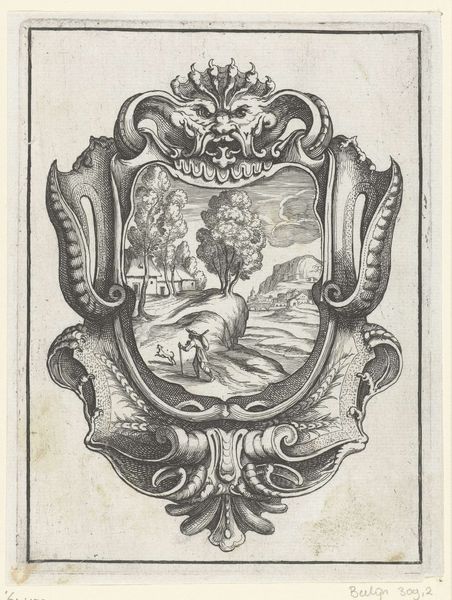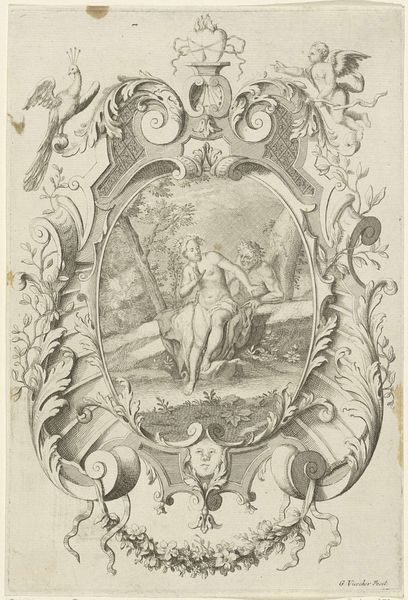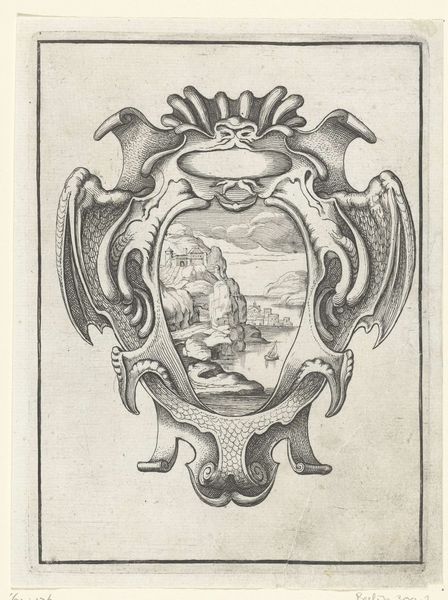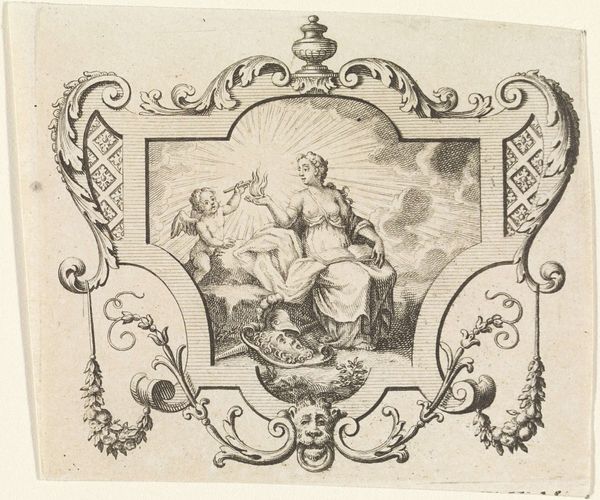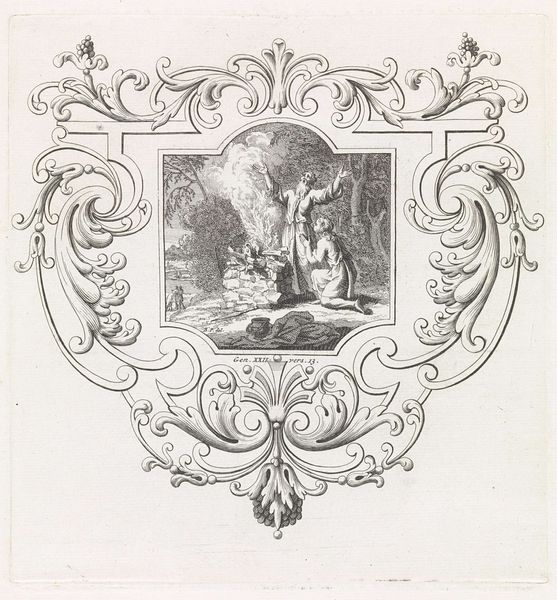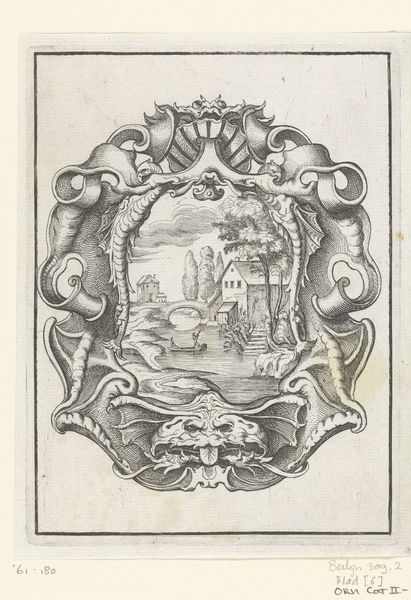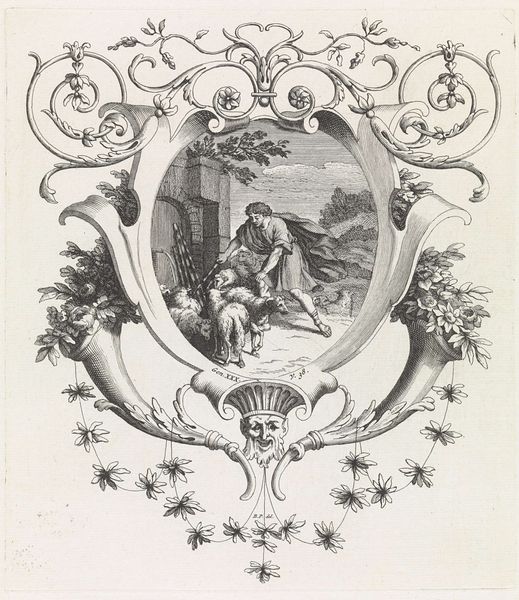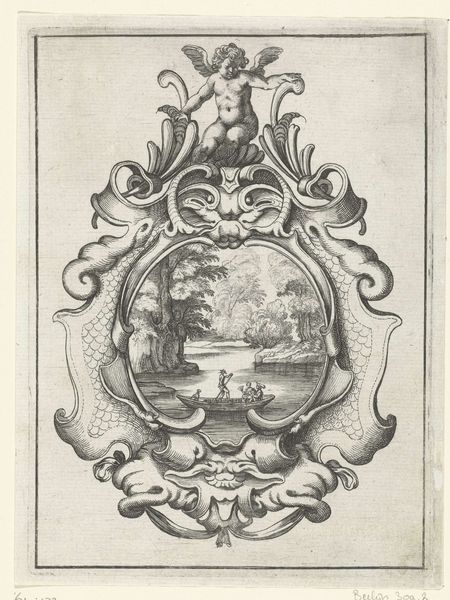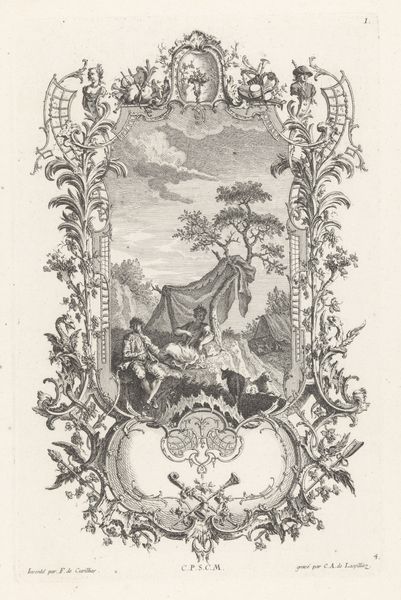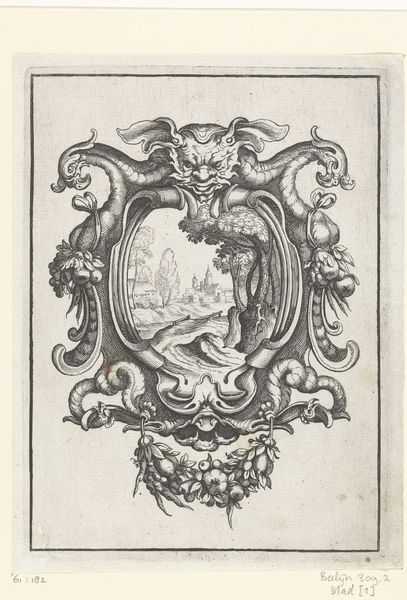
print, engraving
#
allegory
#
baroque
# print
#
landscape
#
figuration
#
form
#
line
#
history-painting
#
engraving
Dimensions: height 193 mm, width 158 mm
Copyright: Rijks Museum: Open Domain
Editor: This print, titled "Cain Questioned by God after the Murder of Abel," dates to sometime between 1683 and 1733, and is attributed to Bernard Picart. The starkness of the lines gives the scene a dramatic and unsettling feel. How do you see the historical context influencing the materials used and the composition? Curator: Let's think about this print as a product of its time. The engraving technique, with its reliance on line, was well-suited to mass production. It allowed for dissemination of biblical stories to a wider audience, reflecting a particular social context deeply shaped by religious beliefs. Do you see how the composition directs our focus to the narrative? Editor: Yes, the barren landscape and dramatic light really emphasize Cain’s isolation. It’s interesting that this biblical scene is captured through the reproducible medium of a print. Is the material here of conceptual importance? Curator: Precisely. The choice of a relatively inexpensive and reproducible material challenges traditional notions of art as unique and precious. Engravings allowed biblical narratives, often commissioned by the church and wealthy patrons in painted form, to circulate among a broader population. How might this shift the work’s meaning or power? Editor: It democratizes it. It means more people could engage with it, shaping their own interpretations and understanding the narratives outside the church. Were there other themes conveyed through printed images that were also prominent? Curator: Certainly. Printed images played a role in spreading ideas about science, politics, and social critique. Think about the implications for literacy, access to information, and the development of public opinion during this period. Notice the ornamental frame around the central scene. How do you interpret this addition to the artwork? Editor: I guess it is meant to ennoble the central scene, as though it were an ornate mirror or precious jewel. Thinking about it in light of mass production, the frame’s attempt to ennoble this printed biblical scene now seems like a sales pitch! Curator: It certainly highlights the commercial aspect of art production during this period, attempting to straddle the boundary between the sacred and the easily consumable. So much to consider! Editor: Absolutely! This conversation has revealed just how integral material and process are to our understanding of even the seemingly most straightforward artwork.
Comments
No comments
Be the first to comment and join the conversation on the ultimate creative platform.

